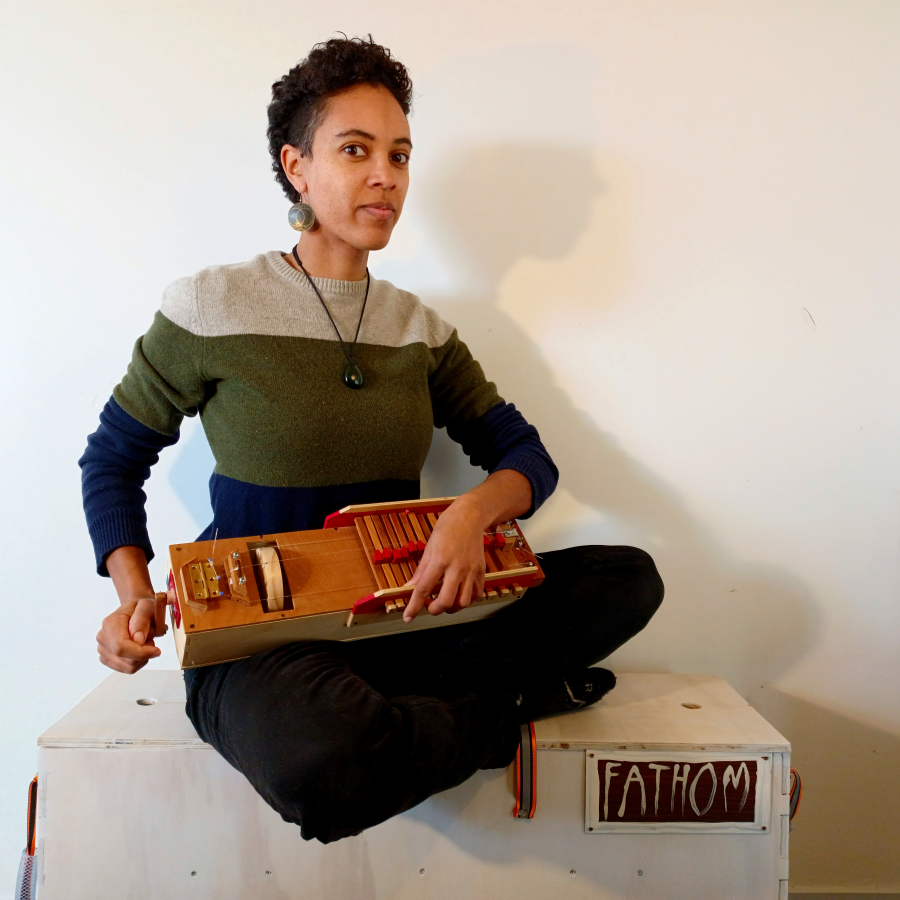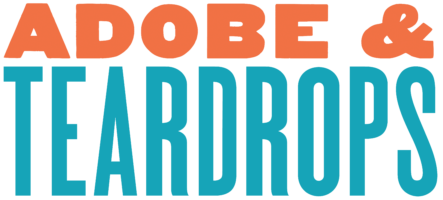If the intensity of Fathom’s song “The World to Breathe” somehow doesn’t grab you, consider watching the folk artist play her new song using found household objects.
Fathom is the brainchild of Nancy Howie, singer-songwriter, musician and maker. Raised with a nomadic nautical childhood on a boat around Mexico, Nancy always had to make do with what was around her. This DIY attitude helped spawn her latest project, a sprawling bedroom-folk experiment featuring DIY instruments and home-recorded music which test the limits of lockdown-borne creativity.
A piano tuner by trade, Nancy embraced the abundance of time the 2020 lockdown offered by handcrafting bespoke instruments out of whatever materials she could find. Two hurdy gurdies, one lap steel, an abundance of horns / saxophones and a cello made from a fence post and tin can later, Fathom found herself with an entire album of songs defined by a unique soundscape.

“‘The World to Breathe’ was intended as a summary of my experience of the pandemic…it morphed into a suite capturing the frenzy and chaos of the world before lockdown, the deafening silence of billions of people having their lives shrunk to fit within the walls of their homes, the anguish of being kept from seeing loved ones, and the mounting malaise at living through a global cataclysm. “
“The World to Breathe” opens with found objects building in layers to a fever pitch, out of which explodes the verse. Those objects include a galvanised pipe, a notebook, a cookie tin, and several glass bottles. The drums throughout the track are homemade. DIY membraneophones, bowed “lyretars”, a hurdy gurdy and glass-bottle flutes are also featured, alongside conventional musical instrument like guitars and bass.
Name a perfect song and tell us why you feel that way.
I find perfection in “You Never Give Me Your Money,” by The Beatles.
The song begins humbly, with piano and bass, and builds, in the space of 4 minutes, to a dizzying frenzy. The layering is tasteful and effective, intensifying the song’s energy through drums, tight vocal harmonies, and increasingly heavy electric guitars. Paul McCartney’s vocals tell the story as much as the lyrics and music, beginning sweetly and ending in an aggressive wail. I love a suite, and this song evolves into three or four different forms, before landing on a haunting outro, all bridged by what is possibly my favourite guitar solo in their entire catalogue. It has a dynamic melody, and some truly spectacular chord changes. I can find no fault whatsoever in this song; it has everything I could ever ask for.
Who are some of your musical influences?
Aside from The Beatles, I have a deep love for Joni Mitchell and Joan Armatrading; Joni for an exquisite songcraft excelling in vocals, lyrics, and instrumentation, and Joan for singing, dressing, and writing in ways that buck tradition, without a hint of apology. David Crosby will always be one of my songwriting heroes for his unusual tunings (much like Joni) and haunting chord choices.
Modern artists I enjoy include Madison Cunningham, who blends discordance and poignance to perfection; Becca Stevens, who infuses jazz seamlessly into singer-songwriter compositions; and Rodrigo Carazo, an Argentinian cantautor, who has the sweetest voice and best chords.
Do you start off with the music or lyrics first? Why?
For me, music always comes first. I try to view songwriting as play. If I’m not having fun puzzling out the chord sequences that most appeal to my tastes, I think I’m doing it wrong. I’ll typically establish a set of parameters within which I write, so I’ll have a thematic starting place to build from when I sit down to work on the music. Once the music illustrates the feeling as accurately as I feel it needs to, I make a start on the lyrics, before figuring out how I want the arrangement to come together for recording.
How do you feel your coming out journey plays into your music?
Oddly enough, my experience of coming out to myself as an artist mirrored coming out to myself as queer. Growing up, I lived in a household which, while being quite liberal, implicitly valued STEM over the arts. Through school I steered away from the arts, focusing instead on all available science and mathematics subjects (while relegating my songwriting habit to the private sphere). Being a strange artist type felt like a secret to be held closely, and it has taken years for me to reach a point where I can embrace the most eccentric aspects of my personality and am able to accept that creativity is central to my being.
How do you feel your queer identity ties into your performance style or music?
It feels to me that a big part of queer identity is forging your own path, one that deviates from a traditional script, but which exists within a heteronormative context. We learn to accept our otherness, to make our own rules and to find our own meaning when our society’s user manual doesn’t necessarily match our experiences.
I think this informs my approach to songwriting, and in particular to “The World to Breathe.” I don’t feel that my voice, the way I play my instruments or the way I style myself as a performer fit within traditional expectations of female singer-songwriters. While this can in some ways be limiting, it can also be freeing, as I am able to write my own narrative as I go. If I want to wear a suit, I can. If I want to descend into my basement and design and build weird instruments to fit within my musical arrangements, I can. I don’t feel restricted by a sense of what I’m supposed to be or how I am meant to behave, either as a person or as an artist. I feel lucky to live in a world where people will still listen to my music in spite of, and in some cases because of, my identity as a queer POC.
